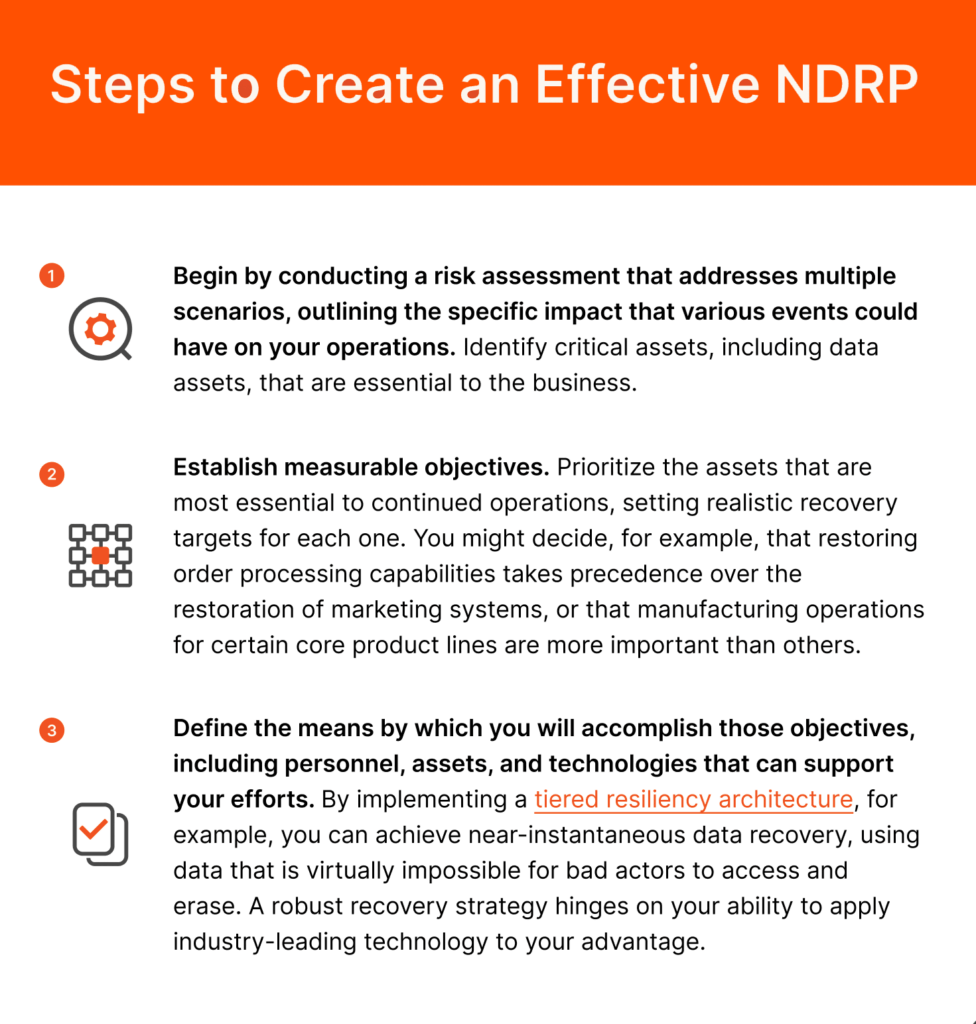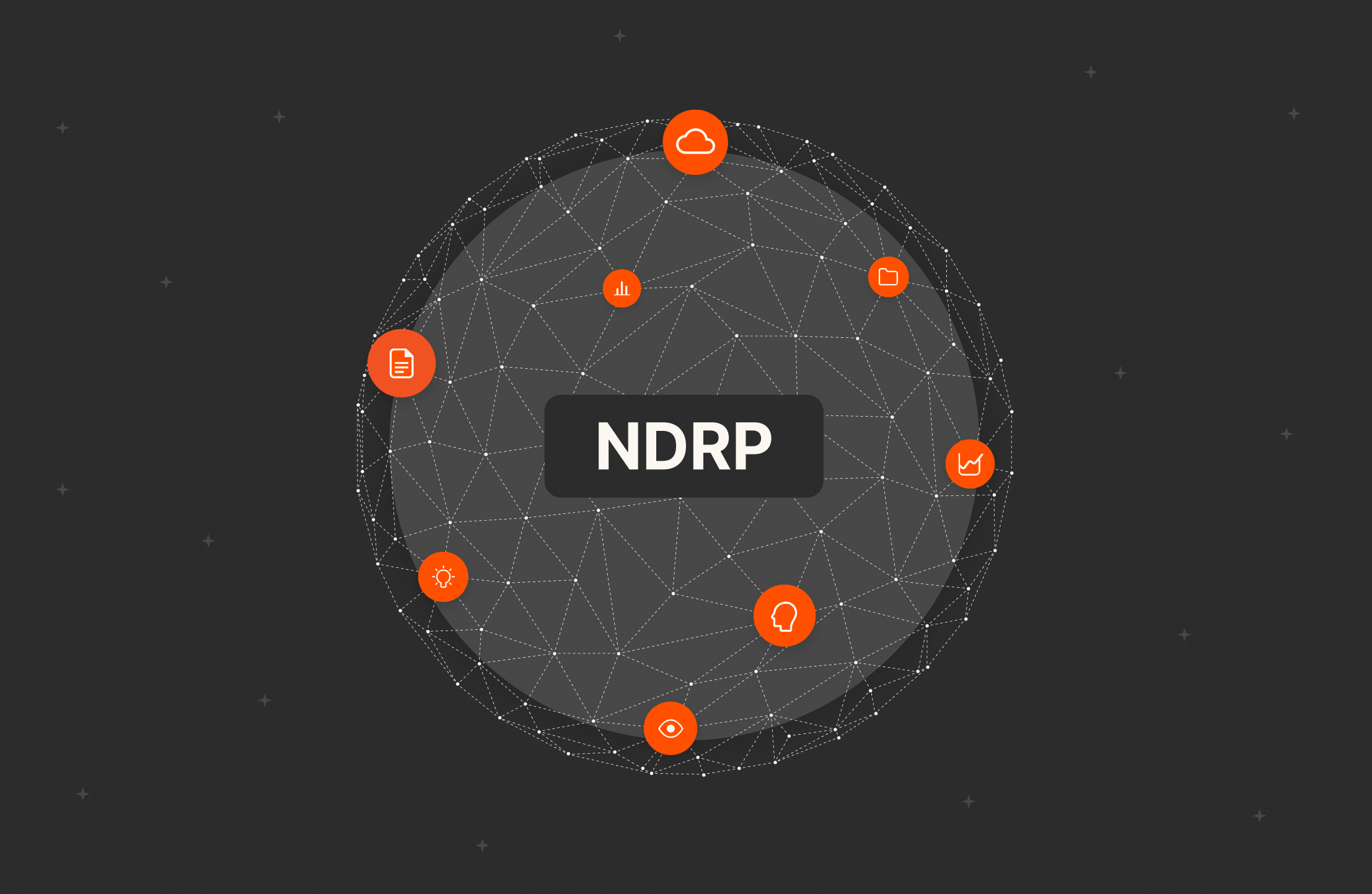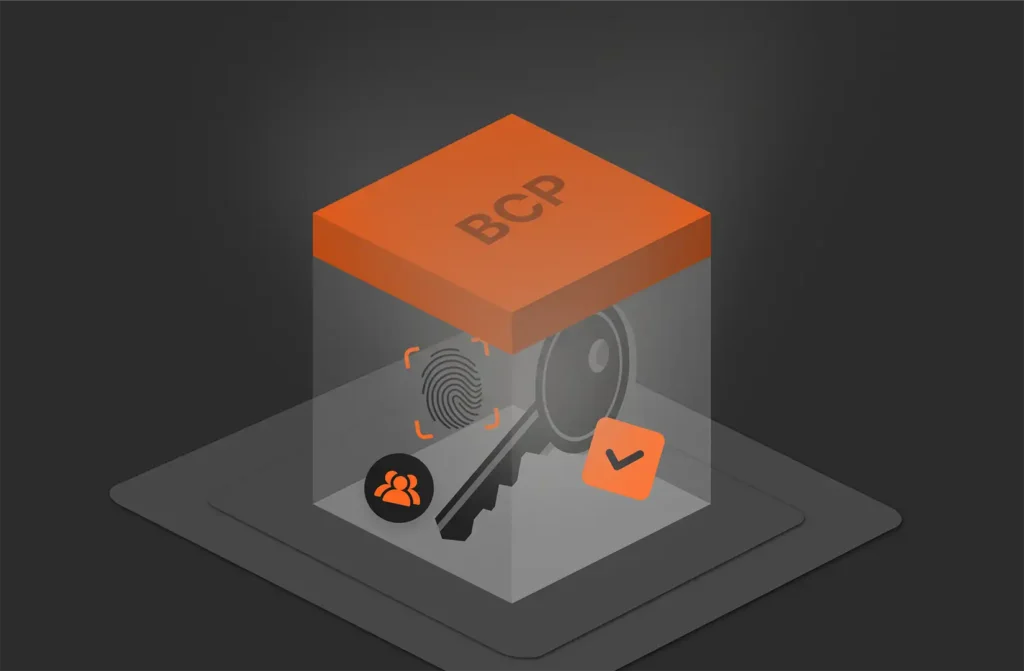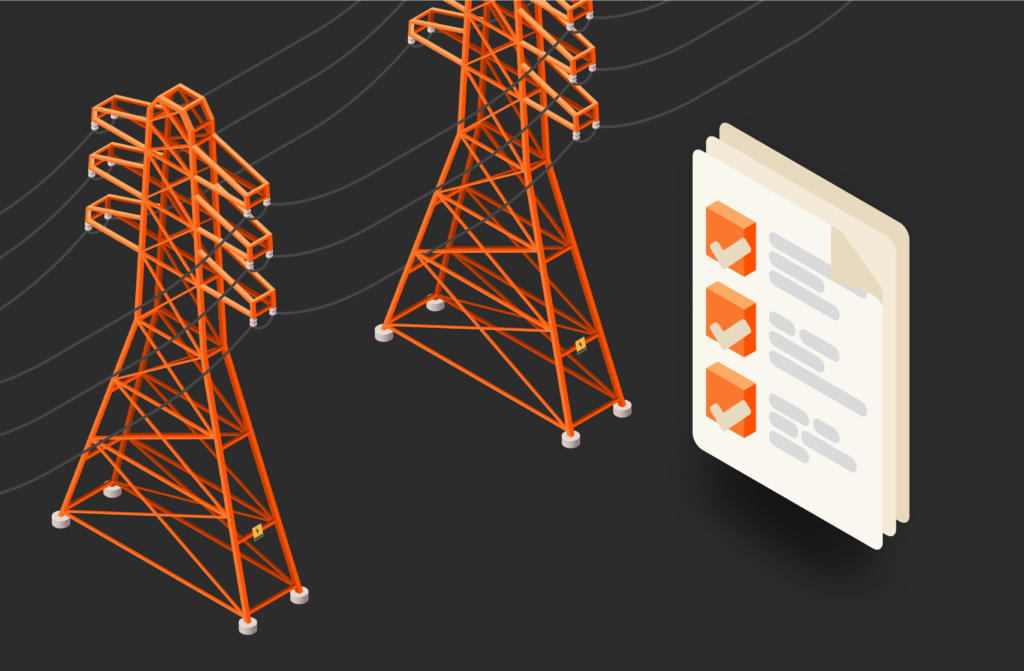Summary
A network disaster recovery plan (NDRP) is a documented approach that helps businesses minimize downtime and prevent data loss due to a cyberattack, natural disaster, or other unforeseen event.
Having a robust network disaster recovery plan (NDRP) is more important than ever. Case in point: When Colonial Pipeline fell victim to a devastating cyberattack in May 2021, the company’s operations came to a standstill, leading to widespread fuel shortages throughout the eastern United States. Even with backups, it was six days before the energy company was able to get its systems up and running again.
Downtime is enormously expensive. Most estimates put the average cost at a few thousand dollars per minute. In some industries, that number is considerably higher, with the brokerage industry topping the list at around $108,000 per minute of downtime.
Cyberattacks, including ransomware, are on the rise. A viable NDRP is an essential component of any corporate risk mitigation program because it allows for rapid recovery from incidents that could otherwise lead to crippling business disruptions.
What Is a Network Disaster Recovery Plan?
A network disaster recovery plan is a documented, structured approach to fully restoring IT operations damaged by a cyberattack, natural disaster, or other unforeseen event. Its primary purpose is to minimize downtime and prevent data loss by restoring network capabilities and services as quickly and effectively as possible.

Basic Elements of a Network Disaster Recovery Plan
Key components of a network disaster recovery plan include:
- Risk assessment: This includes the identification of potential threats such as cyberattacks, hardware failure, natural disasters, or localized events like fires or flooding. The plan should include an assessment of the likelihood and detailed impact of each scenario.
- Recovery objectives: The NDRP should include key measurable outcomes such as recovery time objectives (RTO) and recovery point objectives (RPO) which define the maximum tolerable downtime and maximum allowable data loss, respectively.
- Inventory of assets: An effective NDRP should include an inventory of the various network components essential to maintaining business operations, such as hardware, software, data, and connectivity.
- Recovery strategies: The plan should outline the specific procedures necessary for recovering network services and components, addressing each scenario identified in the risk assessment. Typically, this will involve the use of redundant systems, disaster recovery as a service, and resilient data storage architectures designed to support rapid and complete recovery.
- Communication plan: Your NDRP should specify how communications should be handled during a disaster, detailing how employees, customers, regulators, and others will be kept up to date.
- Roles and responsibilities: This section defines the roles that individuals and teams will play throughout the recovery process. It should also specify the responsibilities of various parties for maintaining a state of readiness.
- Testing and training: If you’ve never tested your disaster recovery plans, then you don’t really know whether they’ll work in an emergency. Organizations should train regularly, test specific procedures, and conduct periodic drills to ensure that the plan works as intended.
- Maintenance and update schedule: It’s critical to update the network disaster recovery plan on a regular basis to keep it current with both technological and organizational changes.
Benefits of Implementing an NDRP
A network disaster recovery plan protects your organization against downtime and data loss. The combined impact of missed productivity, lost revenue, customer attrition, and reputational damage can be profound.
- Mitigate financial loss. By minimizing downtime and ensuring a faster resumption of services, an NDRP helps mitigate financial losses. Prolonged outages can lead to direct revenue loss, contractual penalties, and lost opportunities, all of which can be avoided or minimized with an effective recovery plan.
For instance, consider a consumer goods e-commerce storefront, along with manufacturing and distribution centers to serve both end users and retailers. Faced with a crippling cyberattack, the website goes down, and the company can no longer process orders for retailers. A recent batch of orders was lost altogether, leaving the company with no way to know what was ordered by whom. The company’s most important sales channels are left with insufficient inventory, leading to even more lost revenue.
- Minimize downtime. A well-crafted NDRP helps minimize downtime, enabling rapid recovery from disasters. It helps prevent data loss, ensuring that critical business information remains secure and recoverable, even under adverse conditions.
- Meeting compliance standards. For businesses subject to regulations or customer compliance standards that require disaster recovery, an NDRP helps ensure compliance, prevent regulatory action, and avoid contractual penalties.
- Reputation and trust. Knowing that an organization has a comprehensive disaster recovery plan in place instills confidence and trust in its stakeholders, customers, and partners, reinforcing the company’s reputation for reliability and preparedness.
Overall, a network disaster recovery plan is an essential part of an organization’s strategy to ensure business continuity, safeguard assets, and maintain a high level of service regardless of circumstances. A robust NDRP limits risk exposure and gets your company back up and running quickly in the event of a cyberattack or disaster.
Steps to Create an Effective NDRP
An effective network disaster recovery plan starts with a team approach, incorporating representatives from IT, individual business units, corporate security, and executive management. Corporate risk and compliance managers play a particularly important role, alongside IT.
- Begin by conducting a risk assessment that addresses multiple scenarios, outlining the specific impact that various events could have on your operations. Identify critical assets, including data assets, that are essential to the business.
2. Establish measurable objectives. Prioritize the assets that are most essential to continued operations, setting realistic recovery targets for each one. You might decide, for example, that restoring order processing capabilities takes precedence over the restoration of marketing systems, or that manufacturing operations for certain core product lines are more important than others.
3. Define the means by which you will accomplish those objectives, including personnel, assets, and technologies that can support your efforts. By implementing a tiered resiliency architecture, for example, you can achieve near-instantaneous data recovery, using data that is virtually impossible for bad actors to access and erase. A robust recovery strategy hinges on your ability to apply industry-leading technology to your advantage.
Testing and Maintenance of NDRP
It’s critical to review and revise your NDRP regularly. As your technology landscape evolves, and as your organization grows and changes, your disaster recovery plan will need to adapt accordingly. Significant changes to your IT landscape, organizational structure, business operations, or scope should trigger a review. Incorporate feedback from the drills you’ve conducted since the last plan update. Changes to the risk environment may also indicate the need for review and revision. Plan to continuously monitor and improve your NDRP, with regular testing to ensure its effectiveness.
Regular training and testing are also essential. These activities help identify gaps in the plan and provide practice for the team responsible for implementing it in a real disaster. Consider the various scenarios outlined in your NDRP and develop readiness drills. These may include tabletop discussion-based exercises in which team members talk through specific scenarios, functional exercises that simulate actual disaster scenarios in a controlled environment, or full-scale drills that bring all resources and personnel into action around a highly realistic, simulated disruption.
Modernize Your Network Disaster Recovery Plan with Pure Storage
To survive and thrive in a high-risk business environment, it’s critical to invest in an effective NDRP and commit the necessary resources to make it work when it’s needed. If you’re interested in high resiliency, bulletproof data protection, and rapid recovery, contact the team at Pure Storage. We specialize in cutting-edge storage solutions that keep your enterprise going, no matter what.
Learn more about our disaster-recovery-as-a-service offering, Pure Protect™ //DRaaS, or contact our team today to schedule a demo or talk to a disaster recovery expert.

White Paper, 7 pages
Learn What’s Helping CISOs Sleep Better at Night
And how you can too.

Written By:






